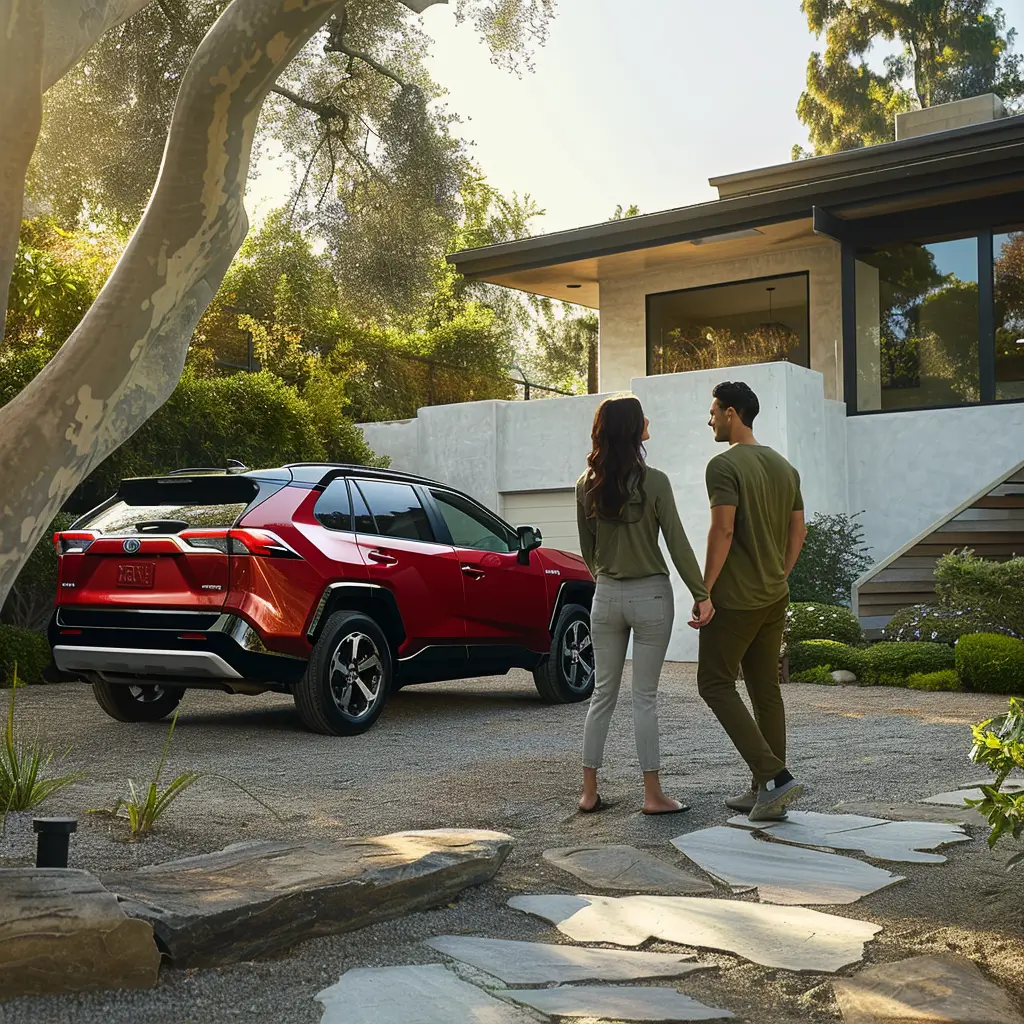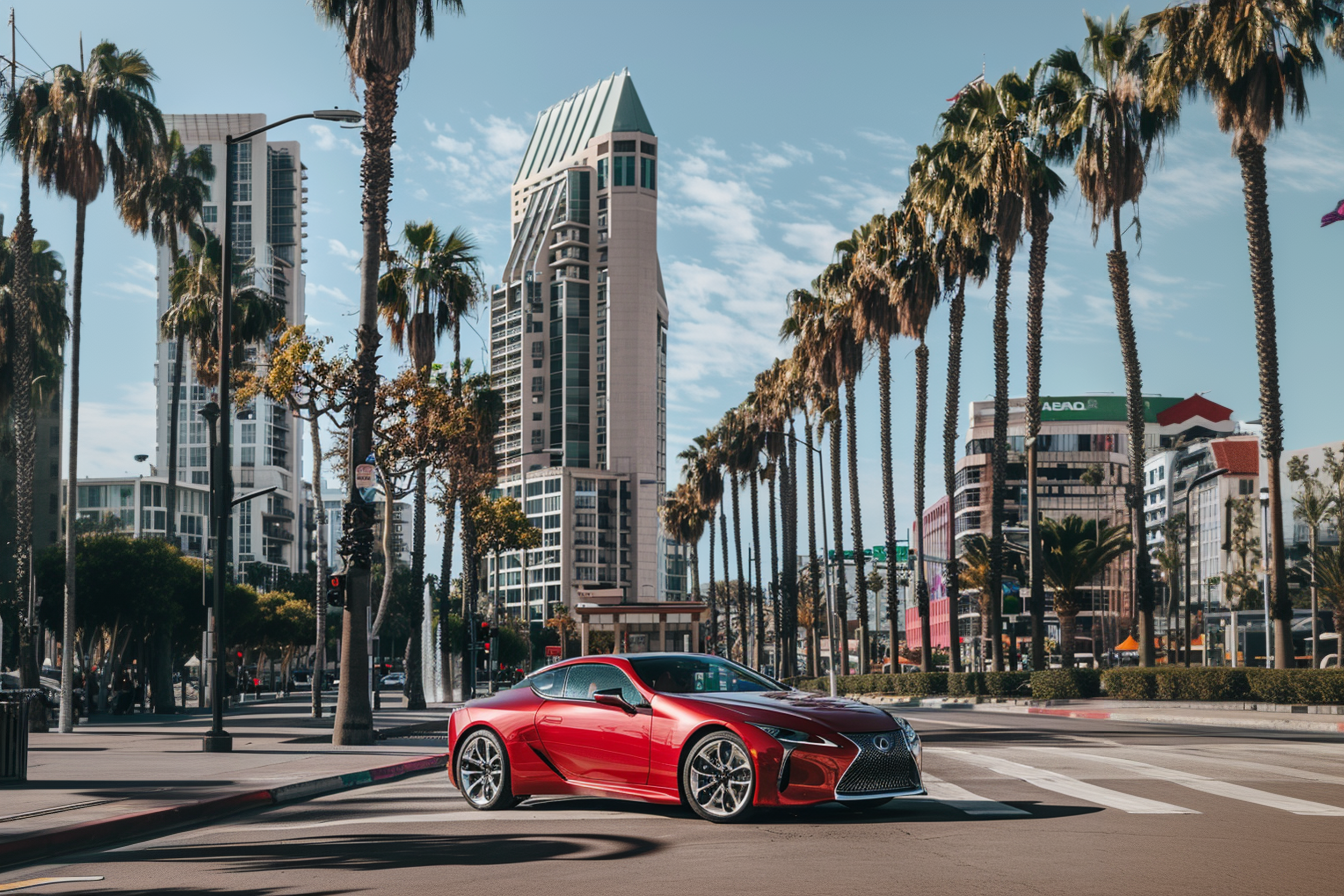In the maze of financial decisions facing individuals today, the dilemma of leasing vs buying a car emerges as a significant fork in the road. Making an informed choice between leasing or buying hinges on understanding the nuances of each option, how they align with personal financial goals, and the impact on one’s lifestyle. The decision is crucial, as it affects financial flexibility, asset ownership, and personal satisfaction. With the automotive market’s complexity and the array of options available, navigating the pros and cons of leasing a car against the traditional path of buying can be daunting. Yet, it remains a pivotal decision in managing personal finances and lifestyle needs effectively.
This article endeavors to dissect the intricacies of leasing and buying a car, laying down a comprehensive guide to making the right choice. It will explore the benefits of leasing a car, delve into the leasing process, and clarify critical terms such as lease term, capitalized cost, lessee rights, and the significance of residual value and depreciation. Furthermore, it will highlight how to secure a favorable lease deal, illuminate potential additional costs, and compare leasing vs buying to delineate which option might serve one’s needs best. Insurance considerations for leased cars, end-of-lease options, and a holistic view on the leasing vs buying conundrum will provide readers with a 360-degree perspective to answer the pertinent question: should I buy or lease a car?
Benefits of Leasing a Car
Lower Monthly Payments
One of the most attractive features of leasing a car is the opportunity for lower monthly payments compared to financing a purchase. Lessees are not paying for the entire value of the vehicle but rather for its depreciation over the lease term, which results in significantly reduced payments. This financial advantage allows individuals to either save money on car payments or afford a more expensive model within their budget. It’s a strategy that can make higher-end vehicles more accessible to consumers who prefer to manage their monthly expenses efficiently.
Ability to Drive Latest Models
Leasing provides the unique benefit of driving a new car every few years without the long-term commitment of ownership. This means lessees can enjoy the latest technology, safety features, and design updates more frequently. The short lease terms, usually ranging from 24 to 48 months, ensure that individuals can stay up-to-date with automotive advancements and trends. Additionally, at the end of a lease, the process of upgrading to the next vehicle is straightforward, requiring just the return of the current lease and the signing of a new one. This cycle ensures that drivers can consistently enjoy the benefits of newer models with minimal hassle.
Maintenance and Repair Coverage
A significant advantage of leasing a car is the inclusion of maintenance and repair coverage within the lease agreement. Because leased vehicles are typically for new vehicles and the traditional lease term (36 months and 36,000 miles) aligns closely with most manufacturer’s warranty period, most repairs will be covered by the manufacturer during the lease term. Some manufacturers will also cover the cost of maintenance for a period of time after a new car is purchased. For instance Toyota and Honda, as of this writing, will cover the cost of maintenance for 2 years or 24,000 miles). This approach can offer peace of mind to lessees, knowing that unexpected service bills are less likely to occur.
Understanding the Leasing Process
Initial Steps to Take
There are a number of options available to the consumer when starting out on their leasing or purchase journey. If they would like to outsource the entire process and leverage a service from the start, to help them identify some vehicles to consider and handle the negotiation from end to end, an auto buying program, can be helpful. For those that would like to get a sense of the market on their own, another offering is reviewing curated current lease offers with payment ranges to give a more realistic expectation. For those that decide to start the process on their own, before embarking on the leasing journey, individuals should research the current makes and models and also compare any current lease specials, taking into account their budget and the monthly car payment they can afford.
For those consumers not using an auto buying service or a service to obtain lease quotes, It’s essential to shop around for the best deals by visiting several dealerships and scheduling test drives, which aids in determining the most suitable vehicle and the available lease deals for new cars. Comparing offers, both online and in person, allows lessees to choose the best deal for their situation. Finalizing the lease involves returning to the chosen dealership to sign the necessary documents, completing the initial phase of the leasing process.
Selecting the Right Car
The selection of the right vehicle is a crucial step in the leasing process. Lessees should narrow down their choices to a few models that fit within their budget and meet their lifestyle needs 20. This step involves considering driving habits, the amount of space needed regularly, and how well the vehicle matches the lessee’s lifestyle 20. It’s also advisable to prepare for a small upfront payment to cover taxes and fees and, if desired, to lock in lower monthly payments throughout the lease by putting additional money down 20. Visiting a few dealers and taking test drives helps in finalizing the choice of vehicle 20.
Negotiating Lease Terms
Negotiating the terms of the lease agreement is a critical aspect of obtaining a favorable lease deal. This negotiation phase is the only opportunity to get desired perks in writing, such as the capitalized cost, mileage limits, and any add-ons like gap coverage 1920. It’s important to negotiate more than just the price, including fees and the cost of add-ons 19. A good lease deal minimizes the total cost over the lease’s lifetime, including the initial down payment 20. Lessees should use online resources to compare offers and ensure they are mindful of the monthly cost, mileage cap, buyout price, money factor, and capitalized vehicle cost 20. Attention should also be given to the fees charged by the lessor, including the acquisition fee, disposition fee, and early termination fee, to assess if they are comparable to other similar offerings 20. Negotiating the lease terms effectively ensures that lessees secure a lease agreement that aligns with their financial and lifestyle preferences.
Key Terms in Car Leasing
Capitalized Cost
The capitalized cost, often referred to as “cap cost,” represents the amount financed in a lease, encompassing the vehicle’s cost minus any applicable incentives, along with additional fees or charges. A lower capitalized cost typically results in reduced monthly lease payments, making it a crucial figure in the leasing process. Lessees have the option for a cap cost reduction, akin to a down payment when buying, which further lowers monthly payments, however there are trade-offs with this approach and an alternative approach is multiple security deposits.
Residual Value
Residual value is a key term in car leasing, indicating the vehicle’s estimated worth at the lease’s conclusion 262930. This value influences monthly payments; a higher residual value can lead to higher payments compared to a lower residual value for the same vehicle’s MSRP 29. The residual value fluctuates based on market conditions, past models, and consumer trends, affecting the lease’s financial aspects significantly 29.
Money Factor
The money factor, akin to an interest rate, plays a pivotal role in determining the lease’s cost. Expressed in decimal form, it reflects the finance charges included in monthly lease payments 313233. Calculating the money factor involves considering the capitalized cost, residual value, and lease term, offering insight into the lease’s affordability 313233. A lower money factor denotes a more favorable leasing condition, as it represents lower finance charges 3233.
By understanding these key terms, lessees can navigate the complexities of car leasing more effectively, making informed decisions that align with their financial and lifestyle goals.
How to Get a Good Lease Deal
To secure a favorable lease deal, it is imperative to approach the process with a strategic mindset. This involves a combination of research, negotiation, and taking advantage of special offers. Below are essential steps to guide lessees through this process.
Research and Compare Offers
The initial step towards getting a good lease deal is to educate oneself on the various terms associated with car leasing, such as capitalized cost, annual mileage, and market value 40. This foundational knowledge empowers individuals to navigate lease offers more effectively. Once equipped with this information, it’s crucial to compare offers from multiple dealerships. This comparison should not be limited to brands one is loyal to; exploring offers from different automakers can reveal which provides the best value 40. Keeping a detailed record of all offers facilitates easy reference during the decision-making process. Viewing lease deals similarly to car loans, where the goal is to reduce the vehicle’s value to lower lease payments, can also be beneficial 40.
Look for Special Leasing Offers
Automakers occasionally provide subsidized leases, known as “subvented” leases, which can significantly reduce the depreciation cost that the lease must finance. These deals, offered by automakers’ finance arms, might include additional rebates or higher residual values, sometimes accompanied by below-market money factors 34. However, it’s essential to note that these attractive deals may be aimed at clearing out slow-selling models and might require top credit scores for eligibility 34. Regularly checking automakers’ and local dealers’ websites can help uncover these special lease deals 34.
Negotiate the Terms
Negotiating the lease terms is a critical aspect of securing a favorable deal. It’s possible to negotiate various elements of the lease agreement, including the capitalized cost, mileage limit, lease buyout price, and down payment 40. Striving to minimize the difference between the capitalized cost and the residual value is key to lowering monthly payments 42. Additionally, it’s advisable to inquire about any available incentives, discounts, or rebates that can further reduce the car’s price 40. Remember, every aspect of the lease agreement, from the money factor to the fees charged by the lessor, is potentially negotiable 35. Engaging in this negotiation phase with thorough preparation and a clear understanding of one’s financial and lifestyle needs ensures the best possible lease terms 35.
By following these steps, individuals can navigate the leasing process more confidently and secure a deal that aligns with their financial and lifestyle preferences.
Potential Additional Costs
Excess Mileage Fees
When entering a lease agreement, lessees agree to a maximum number of miles they can drive per year. Commonly, lease terms include 12,000 miles per year for a standard 36-month lease. Exceeding this limit incurs an excess mileage fee, typically ranging from $0.10 to $0.30 per mile over the agreed limit. For instance, driving 15,000 miles over a three-year lease term at a rate of $0.20 per mile would result in a $3,000 charge at lease end 4445. It’s important to note that high mileage not only affects lessees but also individuals who finance their vehicles, as it can lead to increased depreciation and lower resale value 45.
Wear and Tear
Lease agreements also outline expectations regarding the vehicle’s condition upon return. Normal wear and use are anticipated, covering minor dents, dings, or scratches. However, excessive wear might lead to additional charges. Excessive wear includes, but is not limited to, broken or missing parts, damaged body panels, cuts or burns in the fabric, and excessively worn tires. Lessees are encouraged to maintain their vehicles according to the manufacturer’s recommendations to avoid these excess wear charges 4547.
Disposition Fee at Lease End
At the conclusion of a lease, lessees are often required to pay a disposition fee, which typically ranges from $300 to $400. This fee covers the dealer’s costs associated with reconditioning the vehicle for resale, including cleaning, inspection, and administrative expenses. While the disposition fee is generally noted in the lease contract and deducted from any security deposit, there are ways to avoid it. Purchasing the vehicle at the end of the lease or leasing another vehicle from the same dealer can sometimes waive this fee 4951.
By understanding these potential additional costs, lessees can better prepare for the financial responsibilities associated with leasing a vehicle.
Comparing Leasing vs. Buying
When deciding between leasing vs buying a car, several factors come into play, affecting both short-term and long-term financial planning, ownership rights, and lifestyle flexibility. This section delves into the critical aspects of long-term costs, ownership and equity, and the flexibility and constraints associated with each option, providing a clear comparison to aid in making an informed decision.
Long-Term Costs
Leasing a car often appears more attractive in the short term due to lower monthly payments; however, it generally results in higher expenses over time. This is because leasing payments cover the car’s depreciation during the lease term, which is when the vehicle experiences its most rapid value decrease 5558. Consequently, two consecutive three-year leases can cost significantly more than purchasing a vehicle and retaining it over the same period, with the gap widening if the car is kept for longer durations, even when maintenance and repair costs are considered 5558. On the other hand, buying a car, especially with cash, offers savings both upfront and in the long run, as it eliminates ongoing payments once the loan is paid off, allowing for potential equity buildup in the vehicle 5760.
Ownership and Equity
Ownership is a principal difference between leasing and buying. Purchasing a car, whether outright or through financing, leads to ownership at the end of the payment period, providing the buyer with equity in the vehicle 5657. This equity can be utilized towards the purchase of a new car, offering a return on the investment 60. In contrast, leasing does not result in ownership; the lessee pays for the use of the car during the lease term without building equity. At the lease’s conclusion, the lessee has the option to purchase the vehicle at its residual value or return it, often without any return on the payments made 5556.
Flexibility and Constraints
Leasing and buying each offer different levels of flexibility and constraints. Leasing allows individuals to drive a new car every few years without the long-term commitment of ownership, catering to those who prefer lower monthly payments and driving the latest models 5759. However, it comes with mileage limits and restrictions on wear and tear, potentially leading to additional charges if these terms are not adhered to 5559. Buying a car provides the freedom to drive unlimited miles and make any modifications to the vehicle, as the owner fully controls it. This option is best for those who prefer not to be constrained by the limitations of a lease agreement and who value the ability to sell or trade in the vehicle at their discretion 5760.
In summary, the choice between leasing vs buying a car hinges on individual preferences for flexibility, financial planning, and the value placed on ownership and equity. Understanding the nuances of each option can significantly impact one’s satisfaction with their automotive decision in both the short and long term.
Insurance Considerations for Leased Cars
When leasing a vehicle, insurance considerations are paramount due to the unique ownership structure. Leasing companies, retaining ownership of the car, impose specific insurance requirements to protect their asset. Understanding these requirements is crucial for lessees to ensure compliance and avoid unforeseen expenses.
Required Coverage Levels
Leasing a car entails adhering to stricter insurance requirements compared to purchasing. While the cost of obtaining auto insurance does not inherently increase when leasing, leasing companies mandate more comprehensive coverage. This includes collision coverage, which pays for damages from accidents with other vehicles or objects, and comprehensive coverage, covering damages from theft, weather, vandalism, and other non-collision events. Both types of coverage often come with a low deductible requirement from leasing companies, potentially raising premiums 6768616263. Additionally, higher liability coverage limits for bodily injury and property damage are typically set by leasing companies, surpassing state minimums and further influencing rates 6768616263.
Gap Insurance
Gap insurance emerges as a critical component in leased car insurance due to the rapid depreciation of new vehicles. This coverage is designed to cover the difference between the car’s actual cash value (ACV) and the remaining lease balance if the car is stolen or totaled. While optional for financed vehicles, many leasing companies require gap insurance, integrating it into the lease agreement or offering it as an additional purchase. This ensures financial protection for both the lessee and the lessor, especially in scenarios where the lease balance exceeds the car’s ACV 64656661.
Impact on Premiums
The comprehensive insurance requirements imposed by leasing companies generally result in higher premiums for leased cars. This is not a direct consequence of higher rates for leased versus owned vehicles but stems from the need for more extensive coverage, including lower deductibles and higher liability limits. Dealerships and leasing companies enforce these requirements to safeguard the vehicle’s value, which they own, against potential losses or damages. Consequently, lessees often face increased insurance costs, reflecting the enhanced protection levels required for leased vehicles 6768616263.
By comprehending these insurance considerations, lessees can better prepare for the financial implications of leasing a car. Meeting the leasing company’s insurance requirements ensures compliance and provides peace of mind, knowing the leased vehicle is adequately protected against a wide array of risks.
End-of-Lease Options
When approaching the end of a car lease, lessees are presented with several options, each with its own set of considerations. Understanding these options can help in making a decision that aligns with one’s financial and lifestyle preferences.
Buying the Leased Car
Opting for a lease buyout can be a wise choice for those who wish to continue driving their leased vehicle over the long term. This option allows for the purchase of the leased car, often at a pre-determined price outlined in the lease agreement as the “residual value” 717273. It’s beneficial for lessees who have grown fond of their vehicle and find it in good mechanical condition, possibly still under factory warranty 77. However, it’s crucial to compare the total cost of leasing, including upfront fees and the residual value, against purchasing the vehicle outright to determine the most cost-effective route 71. Lessees should also consider their driving habits and whether they consistently exceed mileage limits, as buying out the lease could negate excess mileage fees 71.
Returning the Car
Lessees can choose to return the leased vehicle to the dealership or leasing company after fulfilling the lease term. This process involves making the last payment, settling any related fees, and ensuring the car is in good condition to avoid charges for excessive wear and tear or mileage overages 7374. Preparation for the return should start around 90 days before the lease ends, with the leasing company likely reaching out to schedule an inspection 74. Lessees should clean the vehicle thoroughly, inside and out, and gather all items that came with the car, such as keys and manuals, to facilitate a smooth return process 7374.
Lease Transfer or Extension
For those not ready to commit to buying or returning the leased vehicle, transferring the lease to another individual or extending the lease are viable options. A lease transfer allows another party to take over the lease terms, providing a way out for the original lessee without incurring early termination fees 75. However, it’s essential to check with the leasing company for any restrictions or requirements for a lease transfer. On the other hand, a lease extension grants additional time to the lessee, either on a month-to-month basis or for a fixed number of months, to decide on their next steps 767778. This can be particularly useful if the lessee is undecided about purchasing the vehicle or hasn’t found a suitable replacement. Lease extensions can be formal, requiring a new contract with potentially revised terms, or informal, continuing under the original contract terms 77.
By carefully considering these end-of-lease options and evaluating personal circumstances, lessees can make an informed decision that best suits their needs and preferences.
Conclusion
Throughout the exploration of leasing versus buying a car, we have navigated the myriad of benefits, processes, and considerations pivotal to making an informed decision. From the initial allure of lower monthly payments and the excitement of driving the latest models that leasing offers, to the long-term financial and emotional satisfaction of owning a car, the choice between these two paths significantly impacts personal financial planning and lifestyle aspirations. It is clear that whether one opts for the flexibility and lower upfront costs of leasing, or the eventual ownership and potential for equity that buying provides, understanding the nuances of each option is crucial for aligning with individual needs and goals.
As we conclude this comprehensive guide, it is evident that the decision to lease or buy a car is not one to be taken lightly. With the implications stretching far beyond mere financial considerations to affect everyday life and future planning, taking the time to weigh each option carefully against personal circumstances is paramount. Ultimately, the right choice is deeply personal, varying significantly from one individual to the next based on an array of factors, including financial situation, lifestyle preferences, and long-term goals. By delving into the intricacies of both leasing and buying, this guide aims to empower readers with the knowledge needed to make the choice that best suits their unique circumstances, paving the way for a satisfying and judicious car ownership experience.
FAQs
Is it more cost-effective to lease a car first and then buy it?
Leasing a car and then buying it at the end of the lease typically results in a higher overall cost compared to purchasing the car outright from the beginning. While leasing may offer lower monthly payments, the total amount paid by the end of the lease and subsequent purchase usually exceeds the total cost of buying the car outright.
Which is a better financial decision: leasing or buying a car?
In the short term, leasing a car can be more financially advantageous due to lower down payments, reduced monthly payments, and minimal costs for maintenance and repairs. However, in the long term, buying a car might be more economical as it allows you to build equity in the vehicle with each payment, potentially saving you money over time.
What are the three main benefits of leasing a car over buying?
Leasing a car offers several advantages over buying, including lower initial costs, more affordable monthly payments, and the convenience of avoiding the resale process. Conversely, buying a car provides the benefits of ownership, no mileage restrictions, and a clear understanding of the vehicle’s costs over time.
How should I decide whether to lease or buy a car?
Deciding between leasing and buying a car depends on your financial situation and preferences. Buying a car involves higher monthly expenses but results in owning an asset. Leasing, on the other hand, offers lower monthly payments and the opportunity to drive a more expensive car than you might otherwise afford, but it leads to a perpetual cycle of payments without ever owning the vehicle.
References
[1] – https://www.consumerfinance.gov/ask-cfpb/what-should-i-know-about-leasing-versus-buying-a-car-en-815/
[2] – https://www.consumerreports.org/cars/buying-a-car/leasing-vs-buying-a-new-car-a9135602164/
[3] – https://www.caranddriver.com/auto-loans/a41867103/leasing-vs-buying-financing-car/
[4] – https://www.consumerreports.org/cars/buying-a-car/leasing-vs-buying-a-new-car-a9135602164/
[5] – https://www.consumerfinance.gov/ask-cfpb/what-should-i-know-about-leasing-versus-buying-a-car-en-815/
[6] – https://www.investopedia.com/articles/personal-finance/012715/when-leasing-car-better-buying.asp
[7] – https://www.chase.com/personal/auto/education/leasing/benefits-of-leasing-a-car
[8] – https://www.amica.com/en/resources/auto/ownership/benefits-of-leasing-a-car.html
[9] – https://www.consumerreports.org/cars/buying-a-car/leasing-vs-buying-a-new-car-a9135602164/
[10] – https://www.experian.com/blogs/ask-experian/how-does-leasing-a-car-work/
[11] – https://www.chase.com/personal/auto/education/leasing/guide-to-leasing-a-car
[12] – https://www.quora.com/If-I-want-to-lease-a-car-will-the-dealer-give-me-a-base-model
[13] – https://www.hbchryslerdodgejeepram.com/pros-and-cons-of-leasing-a-new-car.htm
[14] – https://www.chase.com/personal/auto/education/leasing/benefits-of-leasing-a-car
[15] – https://www.insidecarguys.com/car-lease-maintenance/
[16] – https://www.edmunds.com/car-leasing/10-steps-to-leasing-a-new-car.html
[17] – https://www.wikihow.com/Lease-a-Car
[18] – https://www.bmwnyc.com/how-to-lease-a-car-manhattan-ny/
[19] – https://www.marketwatch.com/guides/car-loans/leasing-a-car/
[20] – https://www.bankrate.com/loans/auto-loans/car-leasing-mistakes-to-avoid/
[21] – https://www.consumerreports.org/money/car-financing/money-saving-tips-for-leasing-a-car-a1089995228/
[22] – https://www.bdc.ca/en/articles-tools/money-finance/buy-lease-commercial-real-estate/how-to-negotiate-commercial-lease-effectively
[23] – https://www.baymgmtgroup.com/blog/negotiating-lease-terms/
[24] – https://www.legalzoom.com/articles/5-tips-for-negotiating-a-commercial-lease
[25] – https://motorlease.com/glossary-terms/capitalized-cost/
[26] – https://mytresl.com/blog/capitalized-cost-reduction/
[27] – https://www.chase.com/personal/auto/education/leasing/cost-of-leasing-a-car
[28] – https://www.caranddriver.com/auto-loans/a43168092/residual-value-lease/
[29] – https://www.lhmauto.com/research/car-leasing/what-is-the-residual-value-of-my-lease.htm
[30] – https://www.carfax.ca/resource-centre/articles/determining-residual-value-should-i-buy-out-my-lease
[31] – https://www.capitalone.com/cars/learn/managing-your-money-wisely/what-is-the-lease-money-factor/1700
[32] – https://www.jdpower.com/cars/shopping-guides/what-is-a-money-factor-on-a-lease
[33] – https://www.tricountytoyota.com/what-is-a-lease-money-factor-Royersford/
[34] – https://www.consumerreports.org/money/car-financing/how-to-get-the-best-car-lease-a5526450548/
[35] – https://www.bankrate.com/loans/auto-loans/car-leasing-mistakes-to-avoid/
[36] – https://www.junge.com/blog/2021/march/23/tips-to-negotiate-the-best-deal-on-a-car-lease.htm?locale=en_US
[37] – https://cars.usnews.com/cars-trucks/best-car-deals/car-lease-deals
[38] – https://www.carfax.com/blog/best-lease-deals-on-cars
[39] – https://www.nerdwallet.com/article/loans/auto-loans/7-steps-getting-great-auto-lease-deal
[40] – https://www.finn.com/en-US/blog/leasing/how-to-negotiate-a-car-lease
[41] – https://www.caranddriver.com/auto-loans/a42168443/how-to-negotiate-car-lease/
[42] – https://cars.usnews.com/cars-trucks/advice/how-to-negotiate-a-car-lease
[43] – https://www.autocreditexpress.com/blog/4-options-when-you-re-over-miles-on-a-car-lease/
[44] – https://mytresl.com/blog/excess-mileage-fee/
[45] – https://www.setf.com/leasing/leasing-misconceptions
[46] – https://www.tenantresourcecenter.org/normal_wear_and_tear
[47] – https://www.federalreserve.gov/pubs/leasing/resource/consider/endopen_info10.htm
[48] – https://www.rentspree.com/blog/normal-wear-and-tear
[49] – https://www.creditkarma.com/auto/i/car-lease-disposition-fee
[50] – https://www.caranddriver.com/auto-loans/a43048668/what-is-a-car-lease-disposition-fee/
[51] – https://www.chase.com/personal/auto/education/leasing/what-is-a-lease-disposition-fee
[52] – https://www.consumerreports.org/cars/buying-a-car/leasing-vs-buying-a-new-car-a9135602164/
[53] – https://www.investopedia.com/articles/personal-finance/012715/when-leasing-car-better-buying.asp
[54] – https://www.nerdwallet.com/article/loans/auto-loans/7-lease-vs-buy-questions-right
[55] – https://www.consumerreports.org/cars/buying-a-car/leasing-vs-buying-a-new-car-a9135602164/
[56] – https://www.consumerfinance.gov/ask-cfpb/what-should-i-know-about-leasing-versus-buying-a-car-en-815/
[57] – https://www.bankrate.com/loans/auto-loans/leasing-vs-buying-a-car/
[58] – https://www.consumerreports.org/cars/buying-a-car/leasing-vs-buying-a-new-car-a9135602164/
[59] – https://www.cusocal.org/leasing-vs-buying-a-car
[60] – https://cars.usnews.com/cars-trucks/advice/buying-vs-leasing
[61] – https://www.progressive.com/answers/car-lease-insurance/
[62] – https://www.usnews.com/insurance/auto/insurance-for-leased-car
[63] – https://www.valuepenguin.com/auto-insurance/leased-car
[64] – https://www.progressive.com/answers/gap-insurance-on-a-lease/
[65] – https://www.independentinsuranceassociates.com/blog/gap-insurance-for-a-leased-car-what-you-should-know/
[66] – https://www.fbfs.com/learning-center/do-i-need-gap-insurance
[67] – https://www.experian.com/blogs/ask-experian/is-insurance-on-a-leased-car-more-expensive/
[68] – https://www.wawanesa.com/us/blog/is-insurance-more-expensive-for-leased-cars
[69] – https://www.caranddriver.com/car-insurance/a31268675/is-insurance-more-expensive-for-leased-cars/
[70] – https://www.caranddriver.com/auto-loans/a44003127/lease-buyout-options/
[71] – https://www.bankrate.com/loans/auto-loans/buying-out-a-car-lease/
[72] – https://www.kbb.com/car-advice/end-lease-chip-shortage/
[73] – https://www.kbb.com/car-advice/returning-a-lease-vehicle/
[74] – https://www.chase.com/personal/auto/education/leasing/returning-a-leased-car
[75] – https://www.eautolease.com/services/lease-return/
[76] – https://www.cars.com/articles/can-i-extend-my-auto-lease-452223/
[77] – https://www.creditkarma.com/auto/i/can-you-extend-car-lease
[78] – https://www.rusnakonline.com/finance/car-buying-tips/car-lease-extensions/
[79] – https://www.bankrate.com/loans/auto-loans/leasing-vs-buying-a-car/
[80] – https://www.consumerfinance.gov/ask-cfpb/what-should-i-know-about-leasing-versus-buying-a-car-en-815/
[81] – https://www.consumerreports.org/cars/buying-a-car/leasing-vs-buying-a-new-car-a9135602164/
[82] – https://www.victoryhondamorganhill.com/buying-vs-leasing/
[83] – https://www.folsomlakehonda.com/pros-and-cons-of-buying-vs-leasing-a-car/
[84] – https://www.volumecars.com/making-right-choice-buying-vs-leasing-vehicle/




